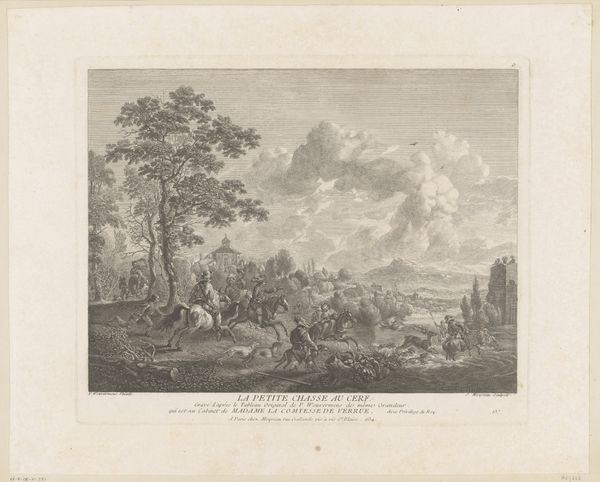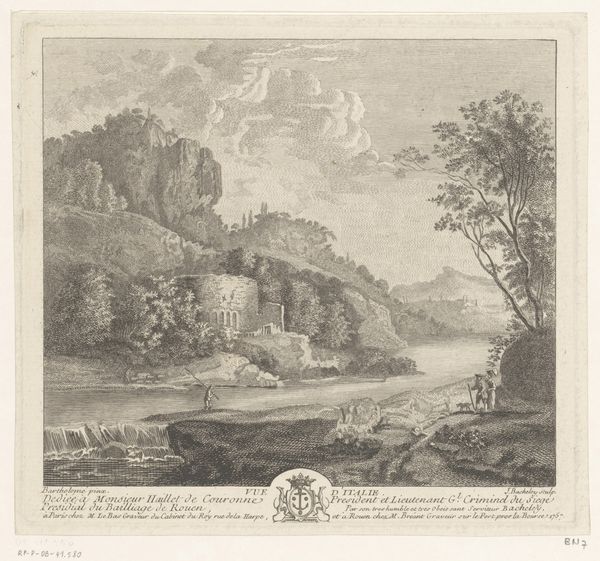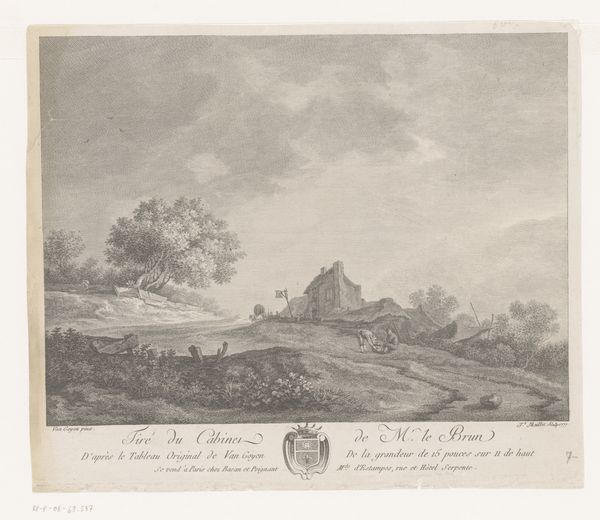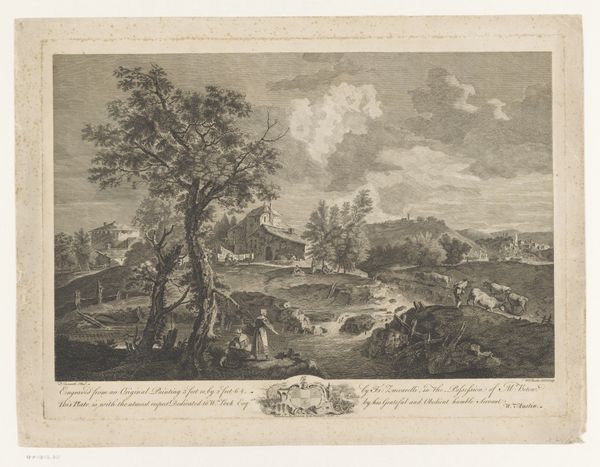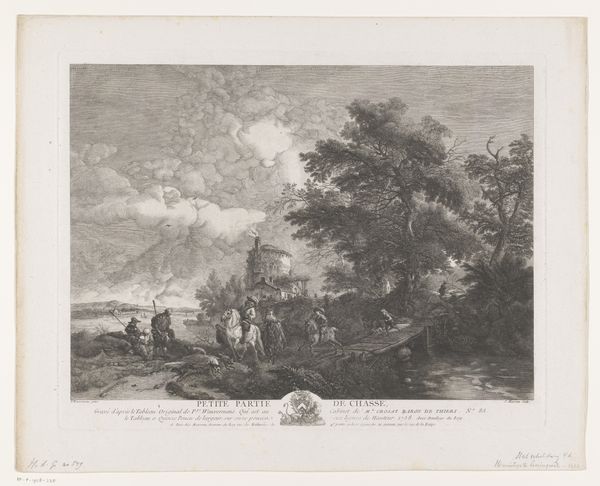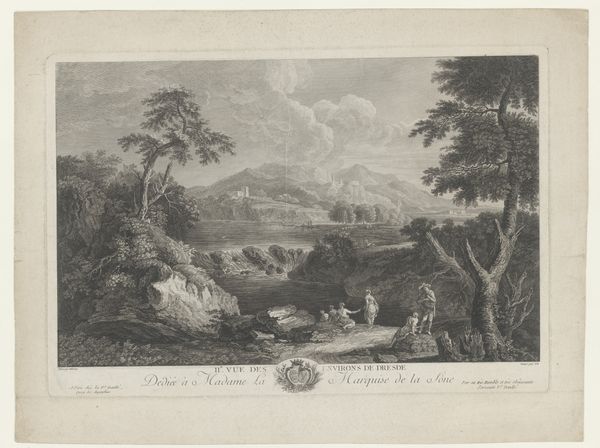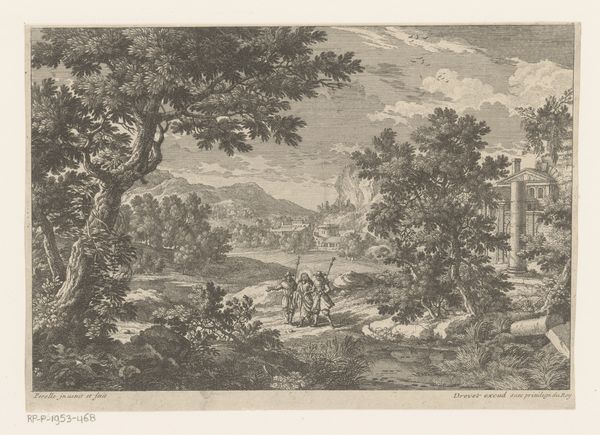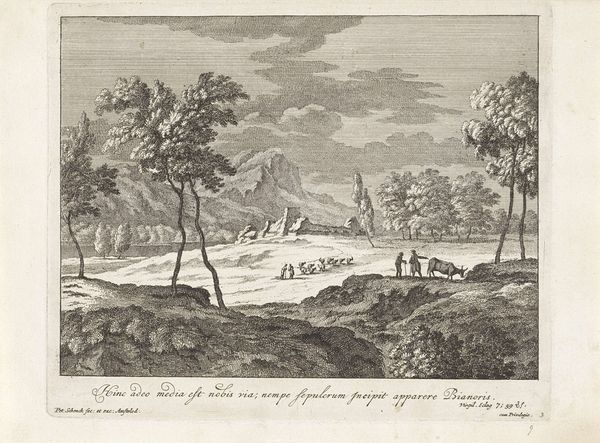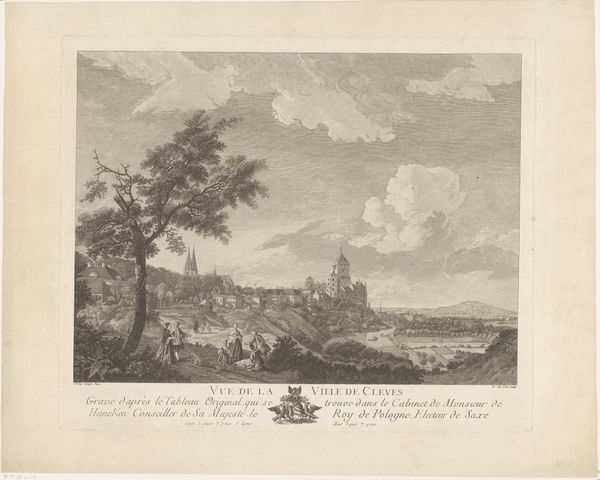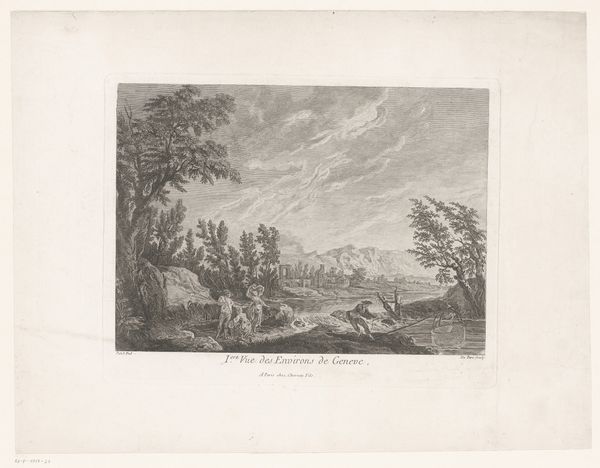
Dimensions: height 406 mm, width 599 mm
Copyright: Rijks Museum: Open Domain
Curator: Let’s take a look at this engraving, "View on the Maese near Maastricht," dating back to 1764. The artist is unknown. Editor: Oh, I like this! It feels… expansive, almost theatrical, but in a quiet way. Like a stage set before the play begins. Curator: That theatricality resonates with the period, actually. Consider the socio-political climate—the waning of the Dutch Golden Age. The meticulous detail in landscapes became a way to document and, in some ways, monumentalize a changing world. What do you notice about its composition? Editor: The eye is led, isn’t it? First by the grazing cows and that horseman with the relaxed posture, then further along the river towards that imposing mountain in the background. It feels like an invitation to travel, to imagine. Also, notice how the artist has rendered those dramatic, billowing clouds. It is a reminder of the sheer force of nature itself, and the way nature swallows humanity over time. A bit melancholic. Curator: Yes, precisely. Landscapes during this period often served as vehicles for broader social and political commentary. Think about the accessibility of prints like this. It made landscapes like the Maas available to a broader audience, creating a shared visual language around place and national identity. These images circulate through the culture of the time, establishing an iconography of the natural world. Editor: But is it really a political statement, or perhaps the opposite? Perhaps this nostalgic portrayal of an agrarian lifestyle is meant to be an escape? An idealized version of nature. Look at how much attention is paid to the small details – the curves in the lazy cattle or the reflections in the water, yet the human figures are less clear. Maybe this romanticized countryside reflects the artist's desire to leave a society they deemed too loud. Curator: That’s an intriguing counterpoint, absolutely! And something about the print, with its delicate lines, suggests intimacy rather than grand statement. The nuances make it compelling, even centuries later. Editor: Indeed. It speaks of our ever present, shifting relationship with nature itself and where we sit within it. Something about the print, even divorced from its history, whispers about the passage of time and that's what grabs my attention now.
Comments
No comments
Be the first to comment and join the conversation on the ultimate creative platform.
